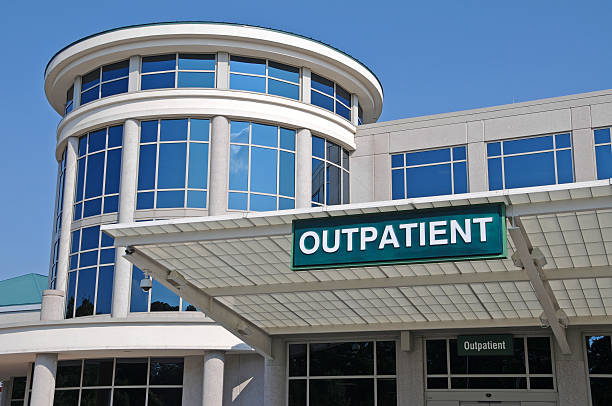When it comes to making a memorable first impression, building signage is one of the most powerful tools your business can deploy. Whether you operate from a retail storefront, an office tower or a commercial complex, the right signage tells prospective clients you’re open for business, professional and ready to make an impact. In this article we’ll dive into the key elements that make building signage effective, why it’s so important for brand recognition, and how you can approach your next signage project with confidence.
Why building signage matters
Your building facade is prime real estate. A well-designed sign communicates your brand identity, values and professionalism all in one glance. Consider this: customers often judge a business based on what they see before they even walk inside. A modern, clean and visually coherent sign sends a message of trust. On the flip side, outdated or poorly placed signage can undermine even the strongest brands.
Moreover, building signage is visible day and night (depending on lighting), and for long stretches of time. That’s brand exposure in its purest form—passers-by, commuters, clients, suppliers: all are exposed to your message. Designing signage that can withstand weather, catch attention from different angles, and integrate with your architectural aesthetic is key.
Key elements of standout signage
When planning your building signage project, keep these components in mind:
1. Visibility & legibility
Size matters. Your sign should be readable from the likely viewing distances: foot traffic, passing cars, public transport. Fonts should be bold, colours high contrast, and lighting used when needed (especially for dusk or night). Placement should avoid sight-line obstacles. The more readable and visible your sign, the more value-adding it becomes.
2. Branding coherence
Your signage should align with your logo, colour palette and overall brand feel. Consistency across your sign, website, print materials and interior signage creates a stronger sense of professionalism and trust. If your sign looks old, mismatched or disconnected from your visual identity, the risk is that customers may conclude you are outdated too.
3. Material & build quality
Building signage needs to endure the elements—sun-fade, wind, rain, dust. Using premium materials (such as UV-resistant vinyl, aluminium returns, powder-coat finishes) means your sign looks great long term. Good installation practices (secure fixings, weatherproofing, proper height and angle) also ensure safety and longevity. A flimsy sign might look cheap or fail prematurely, hurting your brand presence.
4. Strategic placement
Think beyond the default. Facade signage is obvious, but what about the building side, roofline, entrance canopy, or even interior window-areas that face exterior traffic? Also consider line of sight from the street, approach angles, and how lighting will interact at different times of day. A clever placement can raise your sign’s impact significantly.
5. Compliance & permits
Don’t overlook local regulations. Signage often has to comply with building codes, zoning laws, lighting restrictions and heritage overlays. Engaging a signage specialist who knows the local requirements can save time, cost and headaches. Proper permits and planning ensure your signage project goes smoothly—without unexpected delays.
Benefits your business will enjoy
-
Enhanced brand visibility: A bold building sign increases awareness and recognition for any passer-by and potential customer.
-
Competitive edge: Stand-out signage helps you differentiate from surrounding businesses.
-
Long-term marketing value: Unlike temporary ads, building signage is a one-time investment that keeps working daily.
-
Professional credibility: Quality signage signals quality service or product.
-
Way-finding and safety: A well-placed sign helps visitors find you easily and helps deliver a better customer experience.
How to approach your signage project
Step 1: Define your objective. Are you looking to boost walk-in traffic, support branding for an office headquarters, or signal a business expansion? Knowing the “why” helps set design direction.
Step 2: Collaborate with your signage partner. Provide a clear brief: brand guidelines, building photos, vantage-points, budget. A good signage provider will offer mock-ups, sight-line visuals, material options and installation staging.
Step 3: Choose right materials and lighting options. If you want night-visibility, consider back-lit or halo-lit channel letters, LED strips, or spot-lighting. For outdoor durability, choose fade-resistant finishes, robust backing and engineered fixings.
Step 4: Permits and approvals. Confirm with your signage specialist that all municipal approvals are handled (if required). Get the right agreements to avoid surprise costs or delays.
Step 5: Installation and handover. Ensure the installation is executed professionally with minimal disruption. After installation, inspect for proper alignment, clean finish, correct signage switches (if lighted) and provide signage maintenance instructions.
Common mistakes to avoid
-
Too much text: A building sign should be clean and easy to read from a distance—not a detailed poster.
-
Ignoring surrounding architecture: A sign that clashes with the building façade or adjacent structures may feel out of place.
-
Poor lighting strategy: If your sign disappears at dusk because it’s unlit, you lose valuable exposure.
-
Neglecting maintenance: Faded graphics, peeling vinyl or broken lighting reflect poorly on your brand.
-
Last-minute changes: Changing dimensions or layout after production has begun often leads to delays or cost overruns.
Why trust us
At Screen Signs, we’ve worked with businesses of all sizes for over 20 years, delivering high-quality signage that combines design ingenuity with durable materials and professional installation. We believe your building signage should not only mark your location, but elevate your brand. From concept to installation, we make the entire process seamless and stress-free.
Conclusion
Investing in high-quality building signage is a smart move for any business looking to raise its profile, attract new customers, and reinforce its brand identity. With attention to design, materials, placement and compliance, you’ll gain a one-time investment that works for you day in, day out. Partnering with a trusted signage provider ensures your project runs smoothly. If you’re ready to take the next step in your signage journey, Screen Signs is here to help craft your vision into an impactful reality.



